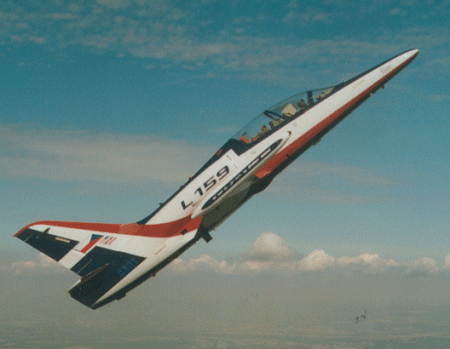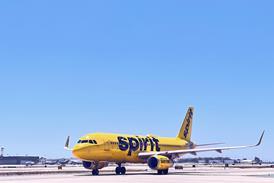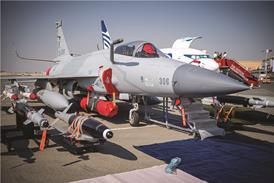
With a 35% shareholding by Boeing, the world's biggest aerospace company, Aero Vodochody is no longer a poor cousin in the trainer/light attack aircraft market. Today, all of its products are offered with some of the latest Western avionics, weapon systems and engines.
The Czech company has moved aggressively to boost export sales by upgrading its range. Flagship product is the L-159 advanced light combat aircraft (ALCA) and flight lead-in trainer, but it also markets the L-39ZA, L-139 andL-59 trainer/light attack aircraft.
All are offered with Western systems, but they can also be fitted with standard east European equipment at a lower cost. "For different customers we are delivering the aircraft in different configurations,'' says Aero Vodochody marketing director Martin Paloda.
Thailand, for example, opted for Western avionics supplied by Israel's Elbit Systems when it bought L-39s, but last year Lithuania decided to take the aircraft with the standard avionics.
The L-39, a two-seat trainer that can be configured for attack missions, first flew in 1976 and 246 have been produced. Customers include Algeria, Bangladesh, Bulgaria, Nigeria, Romania and Syria, as well as Lithuania and Thailand. The latest variant, the L-39ZA, has digital avionics, including a head-up display (HUD) and weapon delivery and navigation system.
The L-139 is a modernised version of the L-39, fitted with the AlliedSignal TFE731-4 turbofan. "We expect the L-139 will replace the L-39 on the production line,'' says Paloda.
Developed as a more capable training aircraft based on the L-39, the L-59 first flew in 1989. The production run of 65 aircraft includes export contracts for Egypt and Tunisia. Egypt specified Western avionics but kept the original weapons system, while Tunisia took Western avionics and a Westernised weapons system. AlliedSignal supplied the avionics and communication system, with Flight Visions providing the HUD. The L-59 introduced a strengthened airframe and a new flight control system with hydraulic actuators.
Aero's revitalised hopes, however, rest firmly with the L-159 programme, which Paloda describes as "quite a different category of aircraft". The single-seat ALCA version has been designed to meet the requirements of the Czech air force, which has ordered 72 aircraft, with first deliveries this year and completion by 2002.
The L-159 is being offered for export in this guise and as a two-seat advanced trainer.
"The L-159 is practically the only aircraft in this category that was designed in the 1990s,'' says Paloda. "We were able to incorporate in the basic design of the aircraft all of the experience gained from the operation of air forces in the latest military conflicts. We think this aircraft is now very suitable for this kind of tactical operation of air forces in low-level peacekeeping missions and so on.''
Western systemsPaloda believes the L-159 will be able to deploy the same weapons as, for example, the Lockheed Martin F-16 and Dassault Mirage in such missions, using the same sophisticated self-protection systems. "We think that the L-159, as a cheaper, smaller, simpler aircraft, can do the same job more effectively.''
Marketing efforts have focused initially on Poland, which needs a lead-in trainer. The Czech Republic has offered Poland major industrial participation in the L-159 and L-139 programmes if it places an order.
The L-159's avionics system is integrated by Boeing following its take-over of supplier Rockwell. The aircraft is powered by the F124 turbofan from AlliedSignal, which also supplies the multi-function cockpit displays and parts of the air conditioning system.
The HUD is a Flight Visions 3000-series system, also being retrofitted to the US Navy's Grumman F-14 Tomcats and which could eventually be used in the Joint Strike Fighter. The inertial navigation system is a Honeywell unit with an embedded global positioning system. The Grifo multi-function radar is supplied by Italy's Fiar.
The L-159 is also fitted with the Marconi Sky Guardian radar warning receiver, and a chaff and flare dispenser from the UK's W Vinten. The pilot's oxygen system is a modified version of that used on the Dassault Rafale fighter, produced by Intertechnique of France. The weapons delivery system is supplied by Hamilton Standard, and has commonality with the unit installed on the Boeing F-15.
"We are in discussions with several countries in central and eastern Europe,'' says Paloda, adding that Aero also has a traditional customer base in Asia and north and central Africa. "We expect that several operators of the L-39 or L-59 will be interested by the L-139 and L-159.''
For the training role, Aero is offering the L-159 without some of the advanced equipment included on the ALCA version for the Czech air force. "Our company is well known for its flexibility to modify the aircraft according to customer requirements," says Paloda.
"For the two-seat version of the L-159, we expect to simplify the aircraft for the training role - it is not necessary to have specialised mission equipment.'' Conversely, the L-159 ALCA has been designed with further upgrade potential, including provisions for electro-optical sensors. There is also potential for installing jamming pods, says Paloda.
"There is some inherent capability in the avionics system so that different weapons could be installed on this aircraft, according to customer requirements. This could include the installation of Maverick or Sidewinder missiles, plus laser-guided bombs.''
Another upgrade planned by Aero is the introduction of an air-to-air refuelling capability, which was not required by the Czech air force. "It will be possible to install an air refuelling probe if we have a customer that will require this feature,'' says Paloda.
As part of its sales campaign in Poland, the Czech Republic has offered local industry the joint development of a "wet wing" for theL-159. The extra fuel would significantly boost the aircraft's range. "The wet wing is one of the future possibilities for the aircraft,'' says Paloda. "We are not in detailed discussions - it was just one of the possible ideas.''
The Czechs have also offered to transfer the L-139 assembly line to Poland under any export deal. "We are very flexible in terms of offset and usually we are offering varying levels of participation for local industry,'' says Paloda.
Source: Flight International























